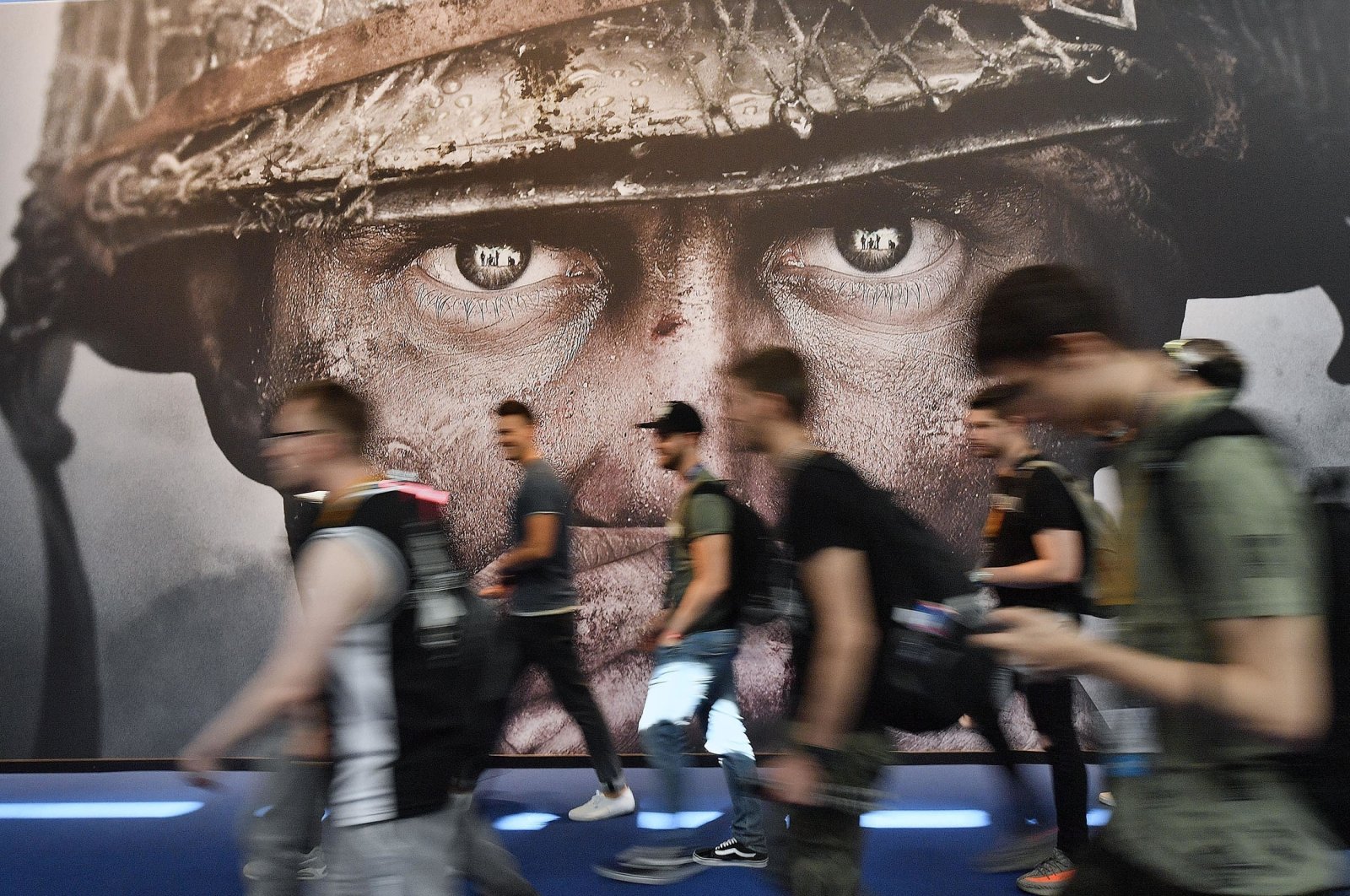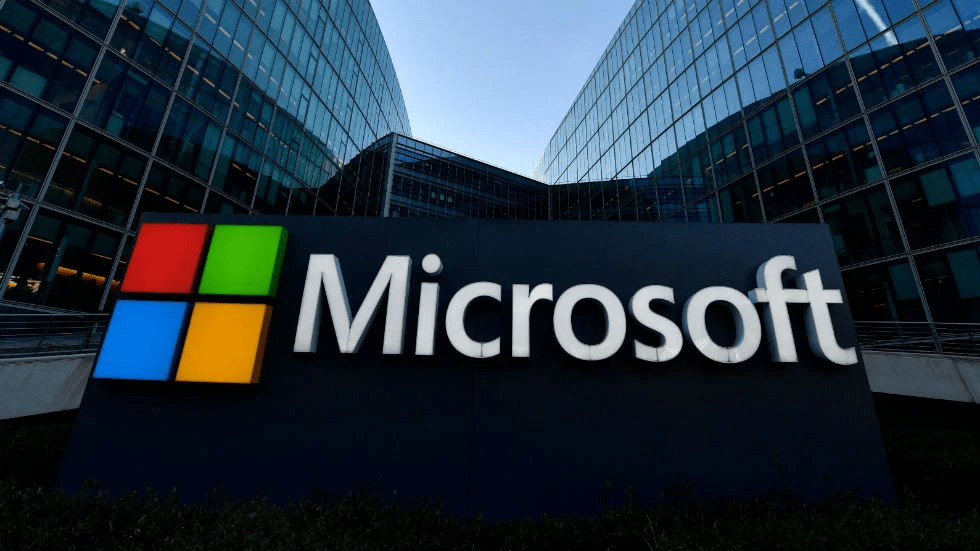Tech
Cloud gaming: Microsoft Activision’s ban in UK

Last week, the United Kingdom’s antitrust regulator blocked Microsoft’s $69 billion acquisition of “Call of Duty” maker Activision Blizzard over concerns that it could kill competition in the still developing “cloud gaming” sector. So, what is cloud gaming?
Technology firms have long dreamt of shifting gamers away from cumbersome consoles and physical purchases to subscriptions and virtual access – essentially a Netflix for video games. So is cloud gaming the promised land?
How does cloud gaming work?
For decades, the console has been king. Sony’s PlayStation, Microsoft’s Xbox, and various Nintendo units have dominated.
Millions have also enjoyed gaming on their PCs.
But the arrival of superfast broadband has allowed companies to experiment with new ways of delivering and monetizing games.
Rather than buying games and storing information on their personal consoles and PCs, gamers would pay monthly fees, access a suite of games, and have their data stored on servers far away.
Doing away with manufacturing and delivering hardware costs would allow healthier profit margins and capture new audiences.
At least, that’s the theory.
How big is the sector?
Some 32 million people were paying for cloud gaming services last year out of a gaming population of over 3 billion, according to Newzoo, a data analysis firm.
This translated to revenues of about $2.4 billion, according to Newzoo, with the broader industry worth more than $300 billion globally.
But analysts are mainly united in predicting massive growth for the sector, fuelled by rising numbers of potential players.
“It’s set to become an industry worth at least $40 billion by 2030, growing by around 40% annually according to industry estimates,” said analyst Susannah Streeter from Hargreaves Lansdown.
In its 400-page decision to block the Microsoft-Activision deal, the U.K.’s CMA antitrust regulator said the number of regular cloud gamers had more than tripled in the U.K. between 2021 and 2022.
And it cited the potentially “transformative” impact cloud gaming could have in the coming years.
But it is still a relatively small piece of the pie.
Who are the big beasts?
Microsoft is already the dominant player in the sector. For example, its Game Pass service has a claimed subscriber base of 25 million.
Its nearest competitor, NVIDIA’s GeForce Now, also claims 25 million registered users – though it has a free tier, the figures are not comparable.
Sony and Nintendo have made moves in the arena, and telecoms firms worldwide are looking at the sector to boost profits from 5G networks.
But these firms are yet to make major inroads and may be concerned by what they have seen recently.
Google launched its Stadia offering in 2019, trying to build a gaming empire mainly from scratch with in-house studios. Instead, it shut down less than three years later.
Industry watchers are now expressing doubts about Amazon’s foray into the scene – it launched its Luna service in 2020 but is reportedly in difficulties.
“Amazon Luna and Google Stadia have the same problem – there simply aren’t enough games to guarantee success,” wrote Tessa Kaur on The Gamer website.
UK’s decision to block
Microsoft was fuming at the watchdog’s decision.
The firm’s usually mild-mannered president Brad Smith told the BBC it was “probably the darkest day” in four decades of Microsoft’s involvement in the U.K.
He said the firm’s confidence in Britain was shaken and hinted at a broader impact on jobs in the country.
But experts were not expecting a massive fallout for the cloud gaming sector.
The apparent immediate effect is that Activision’s games, which include some of the most popular titles worldwide, will not immediately be available for download.
Tom Wijman of Newzoo was confident, pointing out that nothing stopped Activision from making its games available.
But Joost Rietveld from University College London highlighted the promises Microsoft had made to license Activision games to other suppliers and suggested such a move would have benefitted the entire sector.
“Cloud gaming is still only a fraction of the larger games industry,” he told Agence France-Presse (AFP).
“I believe this acquisition could give the space a much-needed jolt.”

Tech
Google Unveils AI-Powered Pixel 9 Lineup Ahead of Apple’s iPhone 16 Release
Google has launched its next generation of Pixel phones, setting the stage for a head-to-head competition with Apple as both tech giants aim to integrate more advanced artificial intelligence (AI) features into their flagship devices. The unveiling took place near Google’s Mountain View headquarters, marking an early debut for the Pixel 9 lineup, which is designed to showcase the latest advancements in AI technology.
The Pixel 9 series, although a minor player in global smartphone sales, is a crucial platform for Google to demonstrate the cutting-edge capabilities of its Android operating system. With AI at the core of its strategy, Google is positioning the Pixel 9 phones as vessels for the transformative potential of AI, a trend that is expected to revolutionize the way people interact with technology.
Rick Osterloh, Google’s senior vice president overseeing the Pixel phones, emphasized the company’s commitment to AI, stating, “We are obsessed with the idea that AI can make life easier and more productive for people.” This echoes the narrative Apple is likely to push when it unveils its iPhone 16, which is also expected to feature advanced AI capabilities.
The Pixel 9 lineup will be the first to fully integrate Google’s Gemini AI technology, designed to enhance user experience through more natural, conversational interactions. The Gemini assistant, which features 10 different human-like voices, can perform a wide array of tasks, particularly if users allow access to their emails and documents.
In an on-stage demonstration, the Gemini assistant showcased its ability to generate creative ideas and even analyze images, although it did experience some hiccups when asked to identify a concert poster for singer Sabrina Carpenter.
To support these AI-driven features, Google has equipped the Pixel 9 with a special chip that enables many AI processes to be handled directly on the device. This not only improves performance but also enhances user privacy and security by reducing the need to send data to remote servers.
Google’s aggressive push into AI with the Pixel 9 comes as Apple prepares to unveil its iPhone 16, which is expected to feature its own AI advancements. However, Google’s decision to offer a one-year free subscription to its advanced Gemini Assistant, valued at $240, may pressure Apple to reconsider any plans to charge for its AI services.
The standard Pixel 9 will be priced at $800, a $100 increase from last year, while the Pixel 9 Pro will range between $1,000 and $1,100, depending on the model. Google also announced the next iteration of its foldable Pixel phone, priced at $1,800.
In addition to the new Pixel phones, Google also revealed updates to its Pixel Watch and wireless earbuds, directly challenging Apple’s dominance in the wearable tech market. These products, like the Pixel 9, are designed to integrate seamlessly with Google’s AI-driven ecosystem.
Google’s event took place against the backdrop of a significant legal challenge, with a judge recently ruling that its search engine constitutes an illegal monopoly. This ruling could lead to further court proceedings that may force Google to make significant changes to its business practices, potentially impacting its Android software or other key components of its $2 trillion empire.
Despite these legal hurdles, Google is pressing forward with its vision of an AI-powered future, using its latest devices to showcase what it believes will be the next big leap in technology. As the battle for AI supremacy heats up, consumers can expect both Google and Apple to push the boundaries of what their devices can do, making the choice between them more compelling than ever.
News
Microsoft Outage Hits Payment Processors

When major payment processing systems have problems, the issues impact many critical systems that society depends on. In this article, we’ll explain the cause of the Microsoft outage and discuss the impact computer networking issues had on Canada. We’ll also examine whether or not Microsoft was at fault and what businesses can do to prevent further outages.
What Happened With the Microsoft Outage?
The outage with Microsoft’s Azure payment processor resulted from a buggy security update from an outside company, CrowdStrike. CrowdStrike offers information technology security services for many Microsoft Windows computers. The company’s software developers sent a new update out, but instead of patching up minor issues with the existing software, the code within conflicted with Windows and prevented computers from booting up. Users expecting to start their computers for a typical day were instead faced with the dreaded “Blue Screen of Death” error message.
So, how does this produce a problem and a payment processor issue? Many computers running payment processing, among many other kinds of software used for airlines, banks, retail, and other essential services, couldn’t start and were unable to let payments through. This is a catastrophic issue for companies that are heavily reliant upon the speed and ease of an electronic transaction.
In Canada, the outage impacted critical computer systems for air travel. Flights couldn’t be paid for and booked, which caused major problems for customers unable to make transactions while flights remained grounded. Travellers stuck waiting for flights to take off made their way over to the airports’ Starbucks and other vendors, only to discover unusually long lines due to payment issues. Even online gamblers looking to take their minds off the situation couldn’t take full advantage of one of the fastest payment options out there because of the outage.
Aside from payments, hospitals for major health systems had to use paper to complete important tasks like ordering lab work and getting meals to patients. Emergency dispatch lines were temporarily unable to function correctly while their computer systems were down.
How Was the Outage Fixed?
Thankfully, CrowdStrike fixed the problem on their end quickly, mostly via an additional reboot that allowed CrowdStrike to send over unflawed code. Unfortunately, for some business and private customers, rebooting wouldn’t be enough with command-line level adjustments needed for the operating system to run correctly.
The Good and Bad of Outages
First, we’re thankful that the outage was not caused by hackers accessing and stealing a mountain of personal data. A recent outage with an automotive software provider went on for much longer and ended much worse for software provider CDK, which likely paid an undisclosed sum north of $20 million to get data back and systems restored.
By some chance, Microsoft is reported to have experienced its own outage, and many information technology professionals blame Microsoft in part for their issues because of how their systems attempted to fix the problem by rebooting over and over again, though some of Microsoft’s PCs needed to warn users to make a change manually. Unfortunately, any computer that required manual intervention took longer to recover, as a knowledgeable person had to access each computer affected by the issue. In some cases, between dealing with several hours of backlogged tasks and slow recovery processes, some businesses took days, not hours, to get back online.
The outage brings up another major point in the cybersecurity and computer industry. CrowdStrike and Microsoft are both big companies in their respective fields. As a result, the effects of bad code spread much further than they could have if there were more competitors making security products or if there were more software companies making operating systems like Windows. While only 8 million computers were believed to be affected out of a much larger global network, those are essential computers for worldwide communication and payment processing. Perhaps companies should be putting their eggs in more than one basket?
The testing methods for the outage are unclear—did CrowdStrike test the routine software update enough to detect the potential for a major outage? Apparently not.
What Should Businesses Do Next?
Software like Microsoft Azure’s payment systems come from what information technology professionals call ‘the cloud.’ The software is remotely managed over the internet, meaning that the computer that runs the system is not physically present at the location. Unfortunately, this also means that an issue with the internet can take critical systems out of service.
Businesses ranging from major airlines and banks to mom-and-pop stores would be well served by backup systems at their locations. These don’t have to be as primitive as the old-fashioned credit-card carbon-copy slide, but there are options available with consistent service that don’t repeatedly rely on the same networks.
Conclusion
There were certainly challenging moments for Canadian businesses and emergency services during the CrowdStrike and Microsoft outage. As they scrambled to understand the problem and waited, albeit briefly, for issues to resolve, many companies learned the importance of having local and reliable backup for their computer systems.
Tech
New photos reveal more details about Google’s Pixel 9 Pro Fold

Google’s secret new line of Pixel 9 phones isn’t that big of a secret anymore. Taiwan’s National Communications Commission (NCC) released new photos of the phones including the Pixel 9 Pro Fold from almost every conceivable angle.
Android Authority found the photos in the NCC archives and uploaded galleries of each of the four phones including the Pixel 9, 9 Pro, 9 Pro XL and 9 Pro Fold. They reveal some interesting details about the new Pixel phones.
The charging rates will be a little faster than the last generation of Pixel phones: Taiwanese authorities measured 24.12W for the base model, 25.20W for the Pro and 32.67W for the 9 Pro XL. The Pixel 9 Pro Fold, however, was the slowest of all of them at 20.25W. These numbers don’t often match up perfectly with the advertised ratings, so expect Google to be promoting higher numbers at its event.
Speaking of chargers, it looks like Google needed a bigger charger to power its new phones. Photos included in the NCC leak show each phone will come with a wall charger that’s around 45W depending on which model you purchase. The charger’s plug moved from the middle to the top of the brick.
The latest photo dump also shows the 9 Pro Fold unfolded for the first time. Google has moved the selfie camera to the inside screen for a wider field of view. The 9 Pro Fold also has a slimmer top and bottom, a reduced fold crease on the display and a full 180 degree unfolding angle to make a screen that’s just over 250mm or just under 10 inches.
These photos are the latest in a very long list of leaks of Google Pixel 9 photos. The last Pixel 9 leak came down yesterday showing two prototype models of the base and XL models. Google might look into buying a new combination lock for the high school locker where they apparently keep all their unreleased gear.

-
Health12 hours ago
Zeneara
-

 Business16 hours ago
Business16 hours agoYou Can Minimize the Odds of Being Ghosted
-

 News14 hours ago
News14 hours agoPolice union calls for ‘fulsome public safety plan’ in B.C. ahead of provincial vote
-

 Economy19 hours ago
Economy19 hours agoMark Carney to lead Liberal economic task force ahead of next election
-
Health9 hours ago
Paleo Diet Secrets Revelated
-
News10 hours ago
The Doctors We Need: Imagining a New Path for Physician Recruitment, Training & Support By Dr. Anthony Sanfilippo
-

 News16 hours ago
News16 hours agoProtesters get 6 1/2-year sentences for roles in Coutts border blockade
-

 News12 hours ago
News12 hours agoBC United sources leak ‘extremism’ file on B.C. Conservatives’ executive Isidorou













